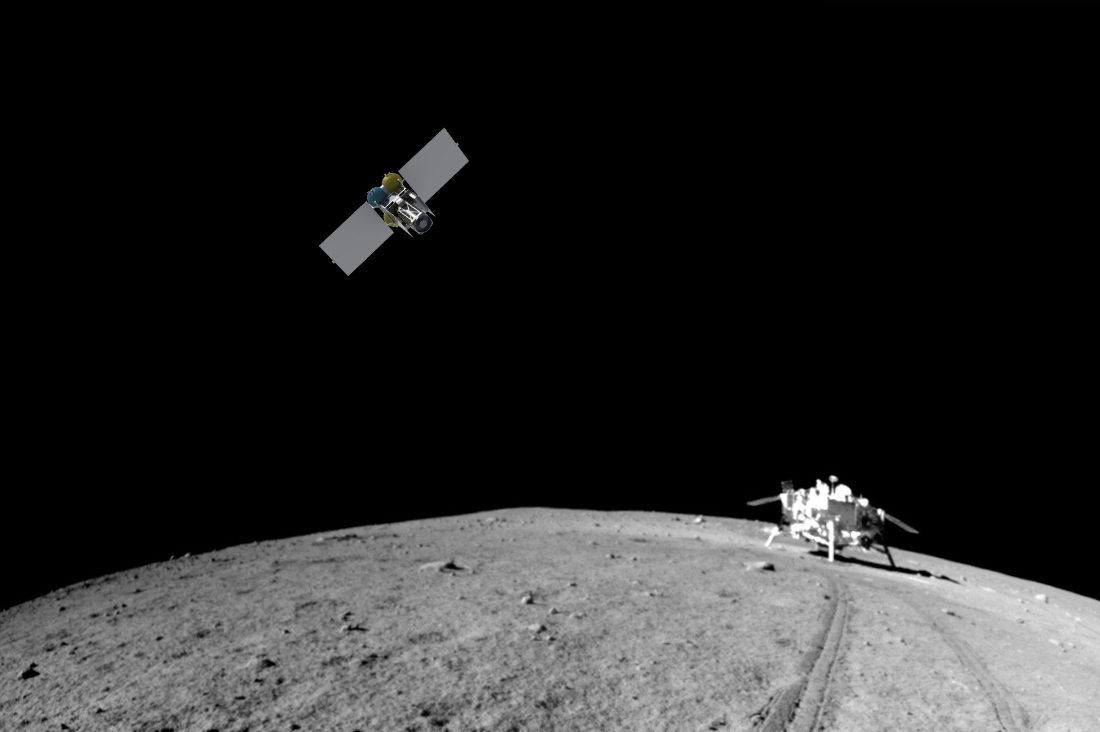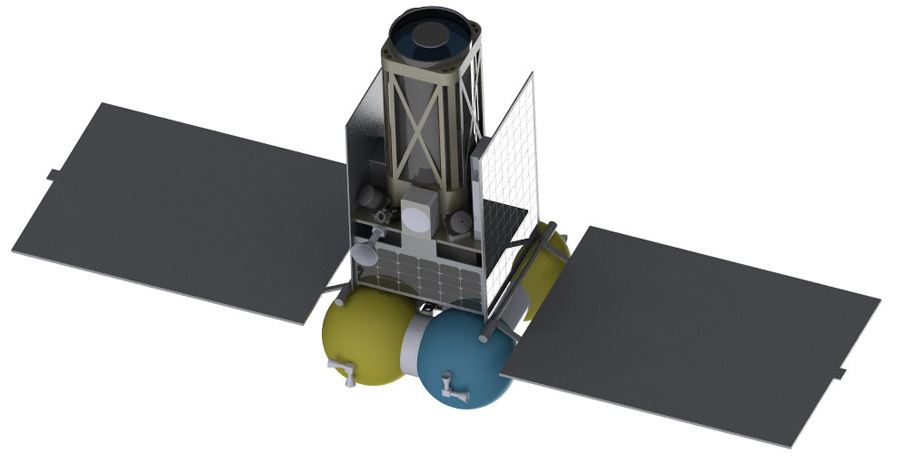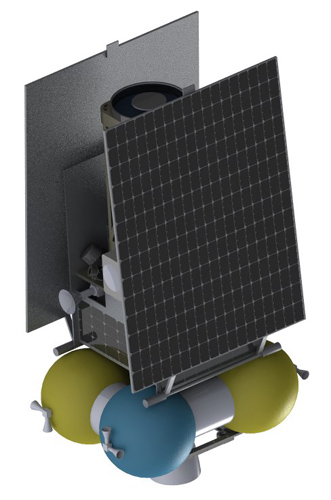The new design of the lunar microsatellite

We publish the materials of the open reporting meeting of the developers of the lunar microsatellite. The goal of the project: to launch a spacecraft into a circumlunar orbit and remove the landing sites of NASA astronauts and USSR Lunokhod. Currently, the first stage of the program is being implemented - the development of the design image of the spacecraft and the main stages of the flight.
May 15, we had an open meeting with the development team. Space Museum kindly provided a conference room. Colleagues from the studio LDK helped to make a video.
Separately lay out the presentation , which was shown at the meeting.
')
When we announced the start of the project six months ago, there were some hopes to keep within the CubeSat standard, and weighed up to 50 kg, but the further the work went, the clearer the prospect of growth in all areas became.

Now "in the maximum configuration" the filled device is no lighter than 160 kg, it is no longer a microsatellite, but a mini one, but in the "dry" state it is twice as light, therefore we formally hold within 100 kg and can be considered a microsatellite.

There are several “growth points”:
Telescope
You can use a complex optical scheme and make it 350 mm long, but our optician asserts that in this case you will need the highest assembly accuracy, high resistance to vibrations, difficulty of adjustment. In general, too high risks of getting a "myopic" telescope in orbit. Therefore, the "pipe" turns out to be 700 mm, but it is more unpretentious in terms of tolerances, vibration resistance, temperature distortions of the structure.
Onboard radio complex
The dimensions of the X-band BRK are 300x300x350 mm, weight 8 kg. Separately horn antenna. Data transfer rate up to 1 Mbps. Our radio technician says that such speed when transmitting from the Moon, in smaller dimensions and mass, will be achieved only at the cost of reducing the reliability of the radio complex.
Solar panels
No matter how I wanted to start a simple device, covered with photovoltaic cells on all sides, but there is not enough power. Therefore, provide a drop-down battery. The location of the battery plane perpendicular to the shooting axis is the most advantageous for batteries that cannot rotate, adjusting to the optimum angle of illumination. This is a forced compromise between reliability and power consumption.

Radiators
Powerful airborne radio complex and other electronics will lead to a strong heat release, so it will have to be dumped . The radiator panels are hidden "under the arms" of the solar panels - there is more of a shadow, and therefore radiation cooling is the most effective.
Fuel tanks
Since we do not know from which orbit there will be an opportunity to launch the device, we consider two main options: from the geostationary (36 thousand km above the Earth) or lunar transition (let in towards the Moon, and then ourselves). This difference requires significantly different fuel stocks. Long sought a compromise between the two orbits of launch. The best way to develop two different spacecraft, each for its own orbit. The second option is to make a microdiff unit, such as a small “ Frigate ” or “ Breeze ”, but this actually means that you have to make two spacecraft instead of one. Fortunately, we were prompted by a compromise option: to design one type of satellite, but with two types of fuel tanks: more or less. Published version of the form: large.

Propulsion system
So far the least developed direction. One serial Russian model has been pre-selected, but there are still questions about it, so there is still no certainty. While it is more or less clear that this will be a classic version of a two-component propulsion system on AT / UDMH. This is simply the most energetically beneficial option. We do not even consider electro-propulsion systems - they require too much energy, increase the flight time, increase the requirements for the durability of electronics, since the apparatus is left in the radiation belts of the Earth for a long time ... In short, the propulsion system automatically adds a zero to the final price of the project.
More about all this in the video:
And the presentation .
You can track the development of the project in the community community "On the Moon" , in the project blog on Geektimes .
Source: https://habr.com/ru/post/369233/
All Articles